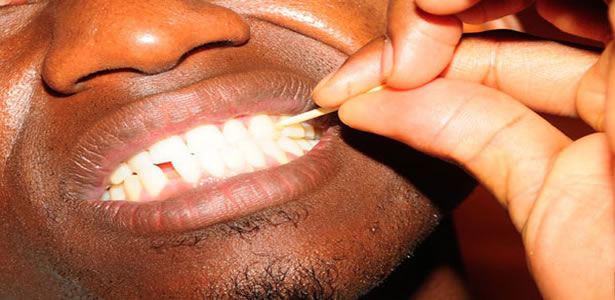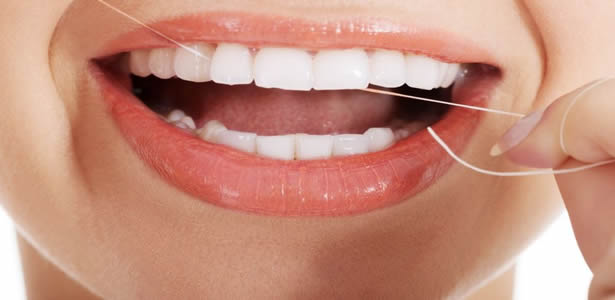Toothpicks Effect
Effect of Toothpick on Gum and Teeth
After a meal of some kind, usually involving chicken or pulled pork or stringy vegetables - whether in your home or out at a restaurant, you feel the need to pick up a toothpick. Flicking and picking and pulling and bending and jamming and grabbing and scratching and scraping.

Dentists maintain that a toothpick is not considered as an interdental cleaner, and as such it was not recommended for cleaning teeth. Using a toothpick is not an ideal way to remove something stuck between your teeth. Toothpicks can cause abrasion and damage to your teeth at the base where they meet the gums. This can lead to gum disease and other dental problems.
When used excessively or improperly, toothpicks might scrape or damage your sensitive gum tissue. Since toothpicks are limited in their ability to reach between your teeth, dentists recommend relying on a dental floss.
However, receding of gums is another cause that can lead to creation of space between your teeth. This recession can be as a result of poor brushing methods and having a gum disease.
Toothpicks are not a good idea, and can even break off and do more harm. A broken splinter can be trapped in your gums, or you can swallow or worse, inhale a piece and have serious problems. Despite this fact, people still love to use them. A woman on a TV crime show chews on them to stop smoking, restaurants give them out as you pay the cashier, and they come in different flavors.

So, if you must use one, try to use them just to dislodge the food trapped between your teeth by taking the tip of the toothpick near the gum line and point it towards the chewing or top edge of the tooth. Do not point into the gums. Gently lift the particle out and away from you. Don't push the pick all the way between your teeth. You will do more harm.
Also, if you have a gum boil, or area where there is pus when you poke it with a toothpick, do not keep using a toothpick. The constant poking can lead to heart attacks, stoke, or infection of your artificial joint. The constant bacterium acts as a seeding to grow an infection in the body.
According to the American Dental Association cleaning between the teeth at least once a day using an interdental cleaner such as floss
Because a toothpick is not considered an interdental cleaner, it is not recommended for cleaning teeth.
Floss
Although dental floss is generally more effective than toothpicks, it can also damage your teeth and gums if not used properly.
For proper use of dental floss; Wrap each end of a length of floss around your index fingers, and use your thumbs for leverage as you carefully manoeuver the floss between your teeth.
Angle the floss around the side of one tooth and gently move it up and down.
Best thing to do is brushing of teeth should be done at other times during the day and also last thing at night.
How to Floss Teeth
We know we should floss at least once a day, but not everyone knows the right way to do it. Use this step-by-step guide to find out how to properly floss your teeth:
- Break off about 18 inches of floss and wind most of it around one of your middle fingers. Wind the remaining floss around the same finger of the opposite hand. This finger will take up the floss as it becomes dirty.
- Hold the floss tightly between your thumbs and forefingers.
- Guide the floss between your teeth using a gentle rubbing motion. Never snap the floss into the gums.
- When the floss reaches the gum line, curve it into a C shape against one tooth. Gently slide it into the space between the gum and the tooth.
- Hold the floss tightly against the tooth. Gently rub the side of the tooth, moving the floss away from the gum with up and down motions. Repeat this method on the rest of your teeth. Don’t forget the back side of your last tooth.
Floss your teeth at least once every day. The American Dental Association (ADA) suggests flossing for two to three minutes, but even 60 seconds of flossing daily can significantly improve your gum health. Most people floss before bed. If you know you've had a meal that led you to have more food stuck in your teeth than usual (such as having corn on the cob for lunch), then you can floss earlier, too, to get out the stray particles of food. That being said, you don't want to overdo the flossing, either, or you may damage your gums. Just once a day should be the perfect amount.




